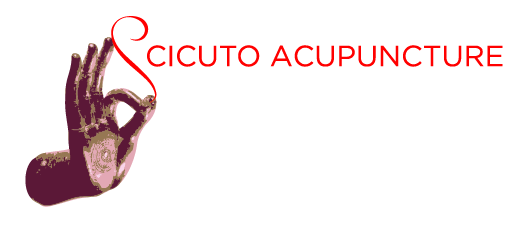Have you heard of Gua Sha?
(This article originally appeared on AcuTake Health)
It’s not all about needles.
Gua sha is one of several non-needle tools in an acupuncturist’s arsenal. It’s often used in combination with needles, but gua sha is a therapy in its own right.
Gua sha is an East-Asian technique of scraping or stroking the skin using a device made of metal, bone, or horn. The scraping can be done on various parts of the body, and most often it’s done on the back and neck.
Here are answers to some commons questions about gua sha.
What can gua sha help with?
Gua sha can help with pain, inflammation, symptoms of cold, flu, asthma, nausea, and vomiting. It also boosts the immune system. If you come down with a cold or flu, be sure to see your acupuncturist right away for acupuncture and gua sha!
Dr. Arya Nielsen, who is considered to be the Western authority on gua sha, says gua shais good for “any chronic disorder involving pain or inflammation.”
Why do people get marks from gua sha?
It’s important to know that the marks made by gua sha are not bruises.
The sha part of gua sha refers to red or purple dots that appear on the skin after it is scraped. The dots are blood being released from blood vessels in the innermost layer of the skin.
A trained acupuncturist will do gua sha until reddish dots start to appear. Once the dots come up, they’ll move to a different area. The color of the marks gives a lot of information.
Purplish dots indicate a higher degree of blood stagnation in the body. Stagnation commonly causes pain, so often, people who come to acupuncture complaining of severe pain end up with purple dots from gua sha.
If the color of the dots is a bright red, it may represent heat in the body. If dots come up easily, it means that the disease is acute. If it takes a long time for the dots to show, it means the disease is more chronic.
The marks from gua sha treatments usually disappear within a few days.
What does gua sha feel like?
Gua sha, when done by a properly trained acupuncturist, is not painful. In fact, many people say gua sha treatments feel like getting a massage.
You may experience symptom relief in as little as one treatment. Cold symptoms are especially responsive to gua sha. With longstanding pain or illness, it may take several treatments to feel a change—just like with acupuncture treatments.
Is this something I can do at home?
Yes. Gua sha can be a great self-care technique and can be performed on loved ones.
However, please use caution. There have been cases of untrained people doing damage with extensive use of gua sha. It’s a good idea to have your acupuncturist show you how to perform gua sha safely before you start using it on yourself or others.
What do I use to perform gua sha at home?
Arya Nielsen uses metal bottle caps rather than the bone or horn tools that traditionally have been used for gua sha. They’re more comfortable and they’re disposable, which is important. Even if you can’t see blood on your gua sha tool, there might be some there. To be safe, it’s best to throw away the caps after each use.
If you’d like to learn more about gua sha, visit Arya Nielsen’s website. You can also check out her book Gua Sha, Traditional Technique for Modern Practice.
Photo by Sara Calabro

